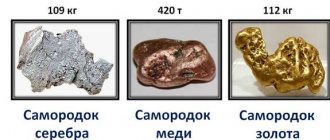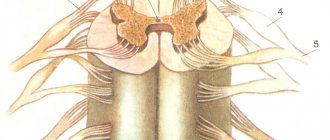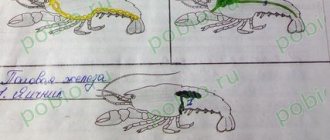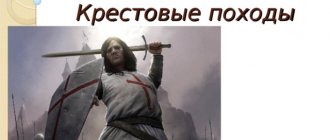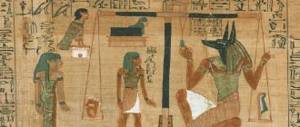The team game on the history of the Middle Ages is designed for students in grades 6–7, divided into teams of 7–10 people. The educational goal of the game is to repeat and generalize students’ knowledge of the history of the European Middle Ages. The game involves moving teams around stations, completing tasks and receiving points for correctly completed tasks on a route sheet and the letters of a password word that must be collected. The order of passing stations is determined by the order of questions on the route sheet, the answer to which is the name of the station. To conduct such a game, students of grades 10-11 are invited to work at the stations and for the final award ceremony, held in the gym, which the team can enter by saying a password word. The game lasts 40-50 minutes.
It should be noted that carrying out this event required the involvement of not only history teachers, but also other teachers of the Gymnasium, since several classes were involved in the operation of the stations. The number of stations must be equal to the number of teams so that everyone can start at the same time.
The use of hints using Chaucer's text in the original language in one of the tasks is explained by the features of the Gymnasium curriculum, where all students study English in depth and could take advantage of this knowledge.
At the end of the game, after the results were announced, representatives of the military history club spoke to the students.
Stations and tasks of the game:
Estates of feudal Europe
EXERCISE.
Here are 3 excerpts from Geoffrey Chaucer’s work “The Canterbury Tales” (the text was taken from the Internet by students when preparing assignments for the station). Determine what occupation of medieval residents these passages relate to and what place they occupied in medieval society.
1. The whole district knew his stable, His bridle jingled with buckles, Like the bells of that chapel, The income from which he spent as if it were his own.
Why pore over books or in the garden, Why languish in defiance of nature? Labor, fasting, deprivation, prayers - what are they for, if there is love and battles? Let Augustine care about salvation, and let the brethren leave their sins.
Clue:
A monk
ther was, a fair for the maistrie, An outridere, that lovede venerie, A manly man, to be an abbot able.
2. Not a single London Doctor could compete with him in the medical profession; Moreover, he was a skilled astrologer; Only when the star was at its zenith did He treat the sick; and, having connected all the threads of His destinies that the horoscope gives, He predicted the outcome of illnesses, - Recovery or death terms.
Clue:
With us there was a doctor of physics; In all this world there was none like him to pick For talk of medicine and surgery; For he was grounded in astronomy.
3. He loved honor, courtesy and freedom; He was a zealous and zealous vassal, and rarely has anyone been to so many places. The baptized and even the infidels recognized his valor in battle.
He took Alexandria with the king, At order feasts he sat at the top of the table, was a guest in Prussian castles, He went to Lithuania, went to Russians,
What can I tell you about his outfit? The horse was good, but he himself was not smart; His camisole was worn out by chain mail, pierced, patched, and the entire hem was stained. He, returning from a long campaign, immediately went to the relics with all the people.
Clue:
A knight there was, and he a worthy man, Who, from the moment that he first began To ride about the world, loved chivalry, Truth, honor, freedom and all courtesy.
4. There was a great skill in weaving - The weavers of Ghent are just astonishing. She liked to do charity, but if one of the ladies squeezed into the temple in front of her, she instantly forgot, in her furious pride, About complacency and benevolence. She could hang ten scarves on her head while getting ready for mass, all of them made of silk or linen; She wore red stockings and soft morocco shoes. She had a lively face, was pretty and rosy, She was an enviable wife and outlived five husbands,
Clue:
There was a housewife come from Bath, or near, Who– sad to say– was deaf in either ear. At making cloth she had so great a bent She bettered those of Ypres and even of Ghent.
5. He was so shabby, wretched, thin, exhausted by a bad road. He was unable to obtain either a parish or clerical service. I learned to endure need and hunger steadfastly. He placed the log at the head of the bed. It is dearer to him to have twenty books than an expensive dress, a lute, food. He despised perishable treasures, But Aristotle, a storehouse of valuable thoughts, could not add a penny to his money,
Clue:
A clerk from Oxford was with us also, Who'd turned to getting knowledge, long ago.
6. He wore a Flanders beaver hat and boots with a stacked strap and a beard. He talked about how to receive and how to save income. He demanded that the waters be protected on the way from Middleburg to Orwell. He knew how to calculate the exchange rate of a crown, And he made a lot of money from the exchange, And he became rich, and even went bankrupt, But he hid his debts from everyone. The merchant willingly gave money on interest, but carried out his calculations so skillfully that he was respected by everyone.
Clue:
There was a merchant with forked beard, and girt In motley gown, and high on horse he sat
ANSWERS: 1. -monk, 2 - doctor of medicine, 3 - knight, 4 - weaver from Bath, 5 - student, 6 - merchant.
Score: 2 points for determining membership in a group, 1 for class, 1 for a picture.
Famous people
Exercise. Determine who is being talked about in the following passages:
- At the age of 10 he knew mathematics and astronomy, at the age of 12 he was considered the best expert on laws in Bukhara. But most of all he was interested in medicine. He became an outstanding doctor, not only treating people, but also teaching future doctors. He taught not only the art of healing, but also the art of compassion for people
- “Oh, valiant warriors, descendants of invincible ancestors! - he cried. – Forget all your quarrels and grievances! Set off on the journey to the Holy Sepulcher, snatch the sacred land from the clutches of the vile conquerors.”
- He wore a long beard, which was unusual for a Mongol, and was strong, because life in the saddle had tempered him. He had a hypnotic look, his eyes resembled those of a cat. Sometimes he caused such horror among his enemies that they unexpectedly went over to his side.
- Initially, he was the leader of one of the Germanic tribes, and then the king of a vast state in the territory of the former Roman province of Gaul. Treacherous, cunning and cunning, he stopped at nothing to achieve his goal.
- This is the only foreigner who has invaded and conquered England over the last thousand years.
- The battle that made her famous took place near Orleans. She was declared a witch and brought before a church court, and four and a half centuries later she was elevated to the rank of a Catholic saint.
- This national hero of the Czech people and the ideologist of the Czech Reformation, the inspirer of the popular movement against the dominance of the Germans and the Catholic Church, was burned by the verdict of a church council in 1415
- This French king was called the “world spider” for the policies that he pursued during the period of centralization of the state: he weaved intrigues, luring his opponents into his networks and destroying them.
ANSWER
- 1. Avicena (ibn Sina), 2 – Urban II (Pope), 3 – Genghis Khan, 4 – Clovis, 5 – William the Conqueror, 6 – Joan of Arc, 7 – Jan Hus, 8 – Saint Louis IX
2 points for each identified personality
Natural economy
EXERCISE.
- What industry was the main one in the Middle Ages?
- Which of the following crops were grown in medieval Europe: wheat, rice, oats, turnips, tomatoes, peppers, potatoes, cucumbers, apples, coffee, pears, cloves, onions, carrots, cabbage, peas, peanuts.
- Draw the principle by which medieval peasants divided their fields when growing grain crops.
ANSWER
- Agriculture (farming)
- They grew: wheat, oats, turnips, cucumbers, apples, pears, onions, carrots, cabbage, peas.
- Three-field crop rotation
Spring
| Winter crops | Steam |
Or for the early Middle Ages
| Sown field | Steam |
Grade:
1 point for each correct answer.
Cities
EXERCISE
Answer the questions:
- Where did medieval cities emerge?
- Residents of medieval Europe often tied tall wooden blocks to the soles of their shoes. For what?
- This category of city residents in many cases did not have the right to carry weapons within the city limits and appear on the streets after 21:00. Who is this?
(at this station the educational picture “Medieval City” was used)
Answers:
- Near castles and monasteries, at river crossings, in places convenient for navigation.
- To avoid getting dirty in the mud
- Students
1 point for the correct answer.
Dragons live here
EXERCISE.
Here is a map of Europe. Medieval residents believed that fantastic creatures lived next to them or among their neighbors, place magnets where they settled:
Dragons, elves, leprechauns, werewolves, witches, gnomes, trolls, mermaids, vampires
ANSWER
Dragons - in England, France, Germany, Russia Elves - in England Leprechauns - in Ireland Werewolves - in France, Russia, Hungary Witches - in England, France, Germany, Ukraine Dwarves - in Germany, Scandinavia Trolls - in Scandinavia Mermaids - in Eastern Europe of Vampires – in Romania
1 point for correct placement of a magnet with a letter or image of a mythical creature pasted on
Catholic Church
EXERCISE
In front of you is a model of a medieval temple (using a model of Notre Dame Cathedral, assembled from a 3D puzzle). Define:
- Which temple belongs to the Catholic Church
- What artistic style does this building belong to?
- List the main characteristic features of this style and show them on the model
ANSWERS
- Notre Dame de Paris
- Gothic
- a rose above the main entrance, lancet windows, two towers, the overall elongation of the structure upward, flying buttresses (external columns), a large number of windows, stained glass.
1 point for correct answer
Feudal castle
EXERCISE
Here is a model of a medieval castle (a model of a feudal lord’s castle glued together from cardboard is used). Show
- Main parts of the castle
- What functions could the castle perform?
- In which European countries are castles built in the Middle Ages still preserved?
ANSWERS
- – can show the fortress walls, drawbridge, moat, donjon
- Fortress, treasury, prison, palace, arsenal, mint, residence of the ruler, administrative center of the district, a city could have arisen around it
- England, Scotland, France, Germany, Poland, Lithuania, Spain
1 point for the correct answer.
Route sheet questions:
Welcome to History Week!
Today we are organizing a holiday in honor of this entertaining and useful science, but to get to it, you need to collect all the letters of the password word
. By sticking them on your route sheet, you will learn from the conductor where you need to go next. The letters are kept by the judges at the stations. To get them, you must complete the task!
How to find out where yours
travel and what is your route? Guess the riddles and find the answer on the signs.
Bon Voyage!
- What groups was society divided into in the Middle Ages?
- What type of economy was dominant in the Middle Ages?
- What was written on medieval maps where lands unknown to people were located?
- Politician, poet, theologian, scientist, warrior - if he remains in human memory, he will be called...
- Which organization had the greatest influence on the spiritual life of people in the Middle Ages?
- In the Middle Ages, for many they were a symbol of freedom.
- What structure was necessary for every major feudal lord to have?
The World History
1. What does the history of the Middle Ages study? Scientists distinguish large periods (epochs) in history, replacing each other: the primitive period, the Ancient (antique) world, the Middle Ages, New Time, Contemporary Time.
Last year you studied the history of primitiveness and the Ancient world. Our book will tell you about the next great era in human history - the era of the Middle Ages, or the Middle Ages.
What were the time limits of the Middle Ages? There is debate about this, but most modern scientists believe that the era of the Middle Ages begins at the end of the 5th century, from the date of the death of the Western Roman Empire and the formation of the first barbarian kingdoms, and lasts for a thousand years.
The concept of “Middle Ages” appeared among those scientists who studied the history of Western and Central Europe. Does this concept relate to the history of Asia, Africa, America? Scientists argue about this too. The history of the peoples of Asia, Africa, and America differs in many ways from the history of the peoples of Europe.
Timeline
Why do you think each new period of history is shorter than the previous one?
The peoples of the East also experienced the Middle Ages. Every nation experienced it at one time or another. The textbook tells about the Middle Ages in the history of the peoples of several continents. But we will focus on Europe - after all, this is our common home.
In ancient times, Europe did not exist as a single historical whole. The huge Roman Empire, which developed around the Mediterranean Sea, was a powerful state. It included many peoples of Southern Europe, as well as the Middle East and North Africa. In the Roman Empire, great successes were achieved in education, science, art and construction, and trade. At the same time, there was a strong inequality between people - patricians and plebeians, free people and a huge number of slaves. But continuous aggressive and predatory wars eventually destroyed it.
The northern and eastern neighbors of the Roman Empire lived differently. The Germans, Slavs, Scandinavians, residents of Britain and the Baltic states had a tribal system. Each tribe believed in its own gods. Most of these peoples did not have their own written language. The Roman Empire and the barbarian tribes were like two different worlds, although their inhabitants knew a lot about each other.
Only in the Middle Ages did Europe become a single “historical continent”, a single Christian world with a common religion and a similar way of life. It was in the Middle Ages that those languages, peoples and states appeared that still exist in Europe today.
Medieval precious bowl
Gospel cover. Around 870
Each European country contributed to the construction of the medieval world. We will focus on some of the largest nations and states of Western Europe, especially those where this era had characteristic features.
The Middle Ages in its development went through three main stages. The first, from the end of the 5th to the middle of the 11th century, is called the early Middle Ages. Then, in the process of mixing peoples and customs, the main features of the era took shape. The next period, which ended in the 13th century, was the developed Middle Ages, when feudal monarchy states emerged, and the foundations and features of the era manifested themselves in their entirety. The period of the XIV-XV centuries is considered the late Middle Ages. It is characterized by new circumstances and transformations within society; At the end of the 15th century, events occurred that allowed Europeans to move into the early modern era. Different countries did not go through these stages at the same time and in different ways.
2. From what sources do scientists study the history of the Middle Ages? Many museums around the world store material monuments: tools that were used by peasants and artisans in the Middle Ages, weapons, coins, furniture, dishes, and clothing. The remains of ships, portraits and paintings have been preserved.
In many ancient cities, you can still see entire neighborhoods built up with medieval houses, fortress walls and towers, majestic temples, and castles.
Medieval castle in Spain.
Think about why such powerful walls were built in the castle.
But physical historical sources cannot tell everything about people’s lives. Numerous manuscripts located in document repositories—archives—provide invaluable assistance to scientists. When people gave, bequeathed, bought land or valuables, they drew up documents. Business documents also include descriptions of properties, reports of estate managers, and contracts. A special group of documents consists of records of laws and decrees of rulers, court decisions, international agreements, and church records.
From the Middle Ages, many historical works, chronicles (chronicles), letters, travel descriptions and autobiographies have been preserved, where events were recorded in the sequence in which they occurred. Often, authors not only described events, but also tried to explain and evaluate them. From the Middle Ages, many works of fiction and works of scientists have also reached us. Before the invention of printing in the mid-15th century (and long after that), documents were handwritten. Works of art can tell a lot about people’s lives: drawings in books and on carpets, paintings, icons, frescoes and statues in temples. All these sources reveal to the attentive researcher the thoughts and feelings of a medieval person.
Stained glass window of a medieval cathedral
Medieval chronicler.
What writing materials and tools are shown in the picture? Guess why people came to the chronicler.
- Previous
- Table of contents
- Next
